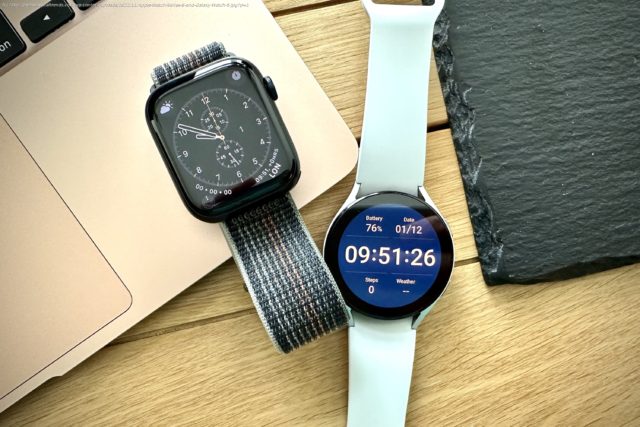Apple and Samsung make the best smartwatches you can buy, but what about the apps that track your health? We compare Apple Health to Samsung Health.
One of the main reasons to wear a smartwatch is to track your health, exercise, and sleep. Both Apple and Samsung have comprehensive health platforms, Apple Health and Samsung Health, but are they really much different from each other?
We’ve been using both, connected to the Apple Watch Series 8 and the Samsung Galaxy Watch 5, to find out.
The apps installed on your phone are very important, not just to connect it to your smartwatch, but also to see all your data, so which one is best? Well, neither system requires only one app. On an iPhone, the standard Watch app connects the phone to your Apple Watch, while you need both Apple Health and Apple Fitness to see your data. All are pre-installed on your phone. The Apple Watch only works with the iPhone, remember.
To use the Galaxy Watch 5, you need Samsung’s Wear app to connect the smartwatch to your phone. Additionally, you need Samsung Health for all your exercise and health data, plus there’s a one-time installation of a plugin for the Galaxy Watch 5 if you aren’t using a Samsung phone. Both the Health and Wear apps come pre-installed on Samsung phones, and can be downloaded through Google Play for other Android phones.
Having to use Apple Health and Apple Fitness is a little confusing, and I’d really like to see Apple combine the two together into one, single app in the future. It would make it more streamlined. Having only one app, as with Samsung Health, makes more sense, but there is a potential problem with this, as we will see later on. Connection and setup of both smartwatches are simple and don’t take long, although you do have to pay more attention to the Samsung platform after you’ve paired the watch.
Why? Some features are turned off by default or require some kind of activation to work, including blood oxygen monitoring, stress monitoring, and the always-on screen. All these have to be set up individually, and may not work until you do. There are fewer steps needed to enable all the Apple Watch’s features, as most are on by default, making it a more user-friendly smartwatch out-of-the-box.
This is the main screen you see when you want to check how active (or not) you’ve been during the day. It needs to be informative, but not too dense. Apple’s “ring” system has three rings to close on a daily basis, covering your movement goal, which is based on calorie burn, the amount of exercise you’ve done in minutes, and an hourly stand goal.
It’s very clear how far you are from meeting your targets, plus there’s a complete breakdown of each category underneath the ring display if you want more details. It’s excellent.
Samsung uses a similar three-goal system covering activity/calorie burn, active time in minutes, and steps. These are displayed in the shape of a heart rather than a circle. Apple doesn’t put any emphasis on step count at all. It’s there in the app, but you really have to search for it, while Samsung incorporates it into its daily set of goals. I personally like to know my step count as it’s an easy metric to understand, but appreciate that calorie burn is a better, more motivational figure to work towards.
The Apple Watch clearly shows your progress towards your goals using the ring system when you open Apple Fitness on the watch, while Samsung’s heart system is the first Tile to the right of the main watch face.






